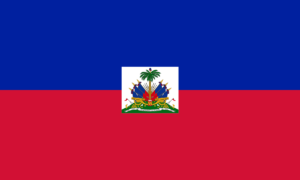Haiti | History, Capital, Language, Flag, Facts & Geography of Belize
History of Haiti:
Haiti is situated in the western third of the island of Hispaniola. Hispaniola was first inhabited by the indigenous Taínos. Also known as Arawak. Christopher Columbus landed on this island in 1492 during his first voyage to America. He claimed the island to the Spanish, and it soon became a major base for future Spanish exploration and conquest in the rest of the Caribbean and the Americas. Santo Domingo was founded in 1496. It was the first settlement in the New World.
When Columbus and Europeans arrived on Hispaniola, the area was inhabited by the indigenous Taíno tribe of hundreds of thousands. However, the numbers of the natives dwindled rapidly as diseases such as smallpox, brought by Europeans, spread and soon killed them. In 1697 France gained control of the western third of the island from Spain. This area later became Haiti.
Get Free Counseling
The French imported slaves from Africa to help grow crops in Haiti, especially sugarcane. The colony enjoyed prosperity during this period. However, in the late 18th century Toussaint a slave rebellion led by his Louverture. They declared independence from France in 1804. Unfortunately, things have not gone well for Haiti since then. It is the poorest country in the Western Hemisphere and its government is riddled with political violence. To make matters worse, Haiti was hit by a devastating earthquake in January 2010. Much of the country has been destroyed and it will take years to rebuild.
Information about Haiti:
| Capital | Port-au-Prince |
| Population | 11,724,763 (Source: 2023 worldometer) |
| Major Cities | PORT-AU-PRINCE (capital), Carrefour, Delmas |
| Borders | Dominican Republic on the eastern side, Jamaica to the west and Cuba to the northwest |
| Gross Domestic Product (GDP) | $20,253,551,885 (2022 worldometer) |
| Currency | gourde (HTG) |
Flag of Haiti:
Haiti Economy Key Industries:
Haiti Major Industries: sugar refining, flour milling, textiles, cement, light assembly industries based on imported parts
Haiti Agricultural Products: coffee, mangoes, sugarcane, rice, corn, sorghum; wood
Haiti Natural Resources: bauxite, copper, calcium carbonate, gold, marble, hydropower
Haiti Major Exports: manufactures, coffee, oils, cocoa, mangoes
Haiti Major Imports: food, manufactured goods, machinery and transport equipment, fuels, raw materials
The Geography of Haiti:
Total Size of Haiti: 27,750 km² (source: 2022 The world factbook)
Geographical Low Point of Haiti: Caribbean Sea 0 m
Geographical High Point of Haiti: Chaine de la Selle 2,680 m
Climate of Haiti: Tropical; semiarid where mountains in east cut off trade winds
General Terrain of Haiti: mostly rough and mountainous
World Region or Continent of Haiti: Central America
Geographical Coordinates: 19 00 N, 72 25 W
The People of Haiti & Culture
Haiti Government Type: elected government
Haiti Nationality: Haitian (s)
Haiti National Holiday: Independence Day, 1 January (1804)
Haiti Independence: 1 January 1804 (from France)
Haiti National Symbol: Hispaniolan trogon (bird)
Haiti National Anthem or Song: La Dessalinienne (The Dessalines Song)
Haiti Languages Spoken: French (official), Creole (official)
Haiti Religions: Roman Catholic 80%, Protestant 16% (Baptist 10%, Pentecostal 4%, Adventist 1%, other 1%), none 1%, other 3%
Interesting Facts about Haiti:
Haiti is the second oldest independent state in the Western Hemisphere after the United States. Independence from France in 1804.
It was ruled by 70 different dictators from 1804 to 1915.
Soccer is the national sport of Haiti. They first participated in the 1974 World Cup. The majority of Haitians love to gamble. They are also known to beg the gods to reveal their winning lottery numbers during voodoo rituals.
Cockfighting is also very popular in Haiti. The winner of the battle takes home $67. That’s almost a month’s salary for someone. The tail is fed raw meat and rum-soaked peppers to make it tough and aggressive.
Haiti is also one of the most deforested countries in the world. Poor agricultural practices, overgrazing, high demand for charcoal and lack of land are the main causes.
The average per capita income in Haiti is very low. 80% of the population lives below the poverty line, which is US$480 per year.
A large portion of Haitian income is spent on food. Access to other comforts in life is not easy and financially unaffordable. His 79% of the Haitian population lives in rural areas.
Of Haiti’s 14 airports, only 4 of his have paved runways. Coffee is the most important export crop.
Haiti produces half of the world’s supply of vetiver, a root crop used in the production of premium perfumes, essential oils and fragrances. 1 in 50 people in Haiti have HIV/AIDS.
In 1963, Hurricane Flora hit Haiti and became the sixth deadliest hurricane in history, killing nearly 8,000 people.
Anemia is common in young children between the ages of 6 months and 5 years. Read the full report here.
Smallpox was also first detected in Haiti in 1507 by him. At that time, the country was known as Hispaniola.
Haiti’s second largest city, Cap-Haitien has a population of 190,000 and is located on the country’s north coast.
